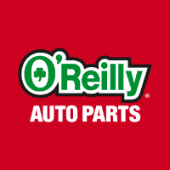-
Welcome to Auto Parts Forum
Whether you are a veteran automotive parts guru or just someone looking for some quick auto parts advice, register today and start a new topic in our forum. Registration is free and you can even sign up with social network platforms such as Facebook, X, and LinkedIn.
Sending tires abroad?
-
Similar Content
-
Similar Topics
-
By Counterman
The aftermarket future is bright for
link hidden, please login to view as a trio of company executives noted during a media conversation at link hidden, please login to view. Masahiro Shiiya, president, AISIN Global Aftermarket; Scott Turpin, president and CEO, AISIN World Corp. of America; and Dwayne Bates, senior vice president, Aftermarket, AISIN World Corp. of America discussed a range of topics about their plans for the global aftermarket segment, including the formation of AISIN Aftermarket & Service of America Inc., as well as an expanded product lineup. “It’s Mr. Shiiya’s vision—he’s been looking at building a maintenance empire from the top all the way down to the tire. Any maintenance-related issue, he’s going to try to fix it,” Bates said in an interview after the press conference. “He’s been focusing on wiper blades, filters—anything that would be a common maintenance part—and tires are included in that. So we’ve partnered with a tire manufacturer and developed our tires.”
AISIN had a range of tires on display in the booth under the AITERRA brand name, including the AIECO EC50 tire for passenger cars, the AICROSS CR60 for SUVs and the AIWAGON WA70 for delivery van applications.
The creation of
link hidden, please login to view was another big headline for the company at the show. The new company will be formed through a merger between AWTEC—an AISIN company focused on transmission remanufacturing—and the aftermarket business unit of AISIN World Corp. of America (AWA). With this move, AISIN leadership said it will expand its manufacturing capabilities for service parts, leveraging and uniting the combined expertise of AWTEC and AWA Aftermarket Sales. Operations also will be streamlined and optimized to increase efficiencies and better position the aftermarket team for growth. “Right now, the merger here in the US is just taking place. It’ll be effective April 1,” Bates explained. “With this merger, it’s not a departure from what we normally have done. We sell 80% of AWTEC-branded product through our sales organization already. It’s an alignment and correlation of our departments, making it more streamlined and more effective for the customer.”
There also was plenty of talk about the future of the automotive market and the impact of new vehicle technologies.
“One of the things that is changing is the parts proliferation from everybody,” said Larrow Kaufman, senior sales manager for the North American Aftermarket at Aisin World Corp. of America. “We’re looking at ICE vehicles and asking, ‘Is that part mix changing in regard to cars being more reliable now than they’ve ever been.’ Then, on the EV vehicle side, we ask, ‘Are some of those parts the same or are they different?’ I think everyone is looking to decide what the next thing is and make sure that they have the product range to cover that.”
Then, there was the big question: What’s the outlook for 2025?
“One of the nice things about the automotive aftermarket is that, regardless of what we’ve been through—be it COVID, be it pre-pandemic, be it post-pandemic—we’ve been relatively steady,” Kaufman said. “I think the market’s still looking at single-digit growth throughout the year, and we plan to take advantage of that.”
The post
link hidden, please login to view appeared first on link hidden, please login to view.
link hidden, please login to view -
By Counterman
link hidden, please login to view revealed that its Elect tires have obtained over 500 homologations since its launch in 2019. According to Pirelli, these tires include technologies that enhance the specificities of electric and plug-in hybrid cars. Pirelli said Elect tires can extend range by up to 30 miles due to low rolling resistance, which results in a savings of up to $160 per year on charging costs. Thanks to the compounds used to make Pirelli Elect, the tires also offer increased grip, to manage the high torque of electric motors and reinforced structures to cope with the load of EVs, according to the manufacturer. “The number of homologations obtained from major manufacturers confirms the validity of the path we have chosen to follow, which is to offer technology that can be adapted to the vehicle, to the tire, and to seasonality,” Piero Misani, chief technical officer of Pirelli, said. “The most modern development tools, such as virtualization and artificial intelligence, allow us to design products that are increasingly in line with the technical and performance requirements of EVs.”
Pirelli said its Elect technology, which debuted with the first-generation Porsche Taycan’s P Zeros, is now integrated into an increasing number of Pirelli’s main product families. Pirelli Elect is also available in an increasing percentage of winter (22%) and all-season (17%) tires, Pirelli said.
The post
link hidden, please login to view appeared first on link hidden, please login to view.
link hidden, please login to view -
-
By NAPA
Losing traction in the snow is no one’s idea of a good time. Even in areas not known for abysmal snowstorms, winter can create icy and hazardous road conditions that drivers must be prepared to deal with. Luckily the solution of adding snow chains for tires used on vehicles that need to brave the wintery roads. Adding
link hidden, please login to view for cars can be a workable solution to get you where you need to go when the roads are not your friend — but they can also be a pain. Knowing when you should be putting chains on tires can help you get out of a slippery situation, but you have to know what you’re doing first. Here’s how to tell if it is time to use snow tire chains on your vehicle. Technically Speaking
While tire chains are legal in all 50 states different
link hidden, please login to view regulate chain usage in different states. Even Hawaii has a law on the books for tire chains (only if you are driving on on Mauna Kea though). Before you invest in a shiny new pair, make sure you know whether chains are allowed, permitted or even required in some cases. Generally, a chain “requirement” means you must have them in your vehicle if you want to pass certain checkpoints that pop up in inclement weather. Some go as far as requiring tire chains to be installed when road conditions reach a certain point with fines and penalties for non-compliance. Places where chains are permitted usually come with some disclaimer that restrict their usage, so make sure you know the law and follow it. There may even be different tire chains laws for passenger vehicles versus commercial trucks. Most tire chain laws are meant to help protect the roadway surface from damage caused by using chains without enough snow coverage. Leaving snow chains on tires when the conditions don’t warrant it can also damage your tires. The other important factor to consider is whether your vehicle is suitable for chains. You can find chains for most tire sizes, but there must be enough clearance for them to fit on without causing damage to the body, undercarriage or brakes. Make sure to check clearance around the front tires with the steering wheel turned fully to each side to make sure nothing rubs. If clearance is tight you may want to consider
link hidden, please login to view, which sometimes have a lower profile. Consult your owner’s manual for tire chain specifications and allowances. Be Prepared link hidden, please login to view
Because chains are something you will likely need to take on and off at least once per trip, and because the conditions surrounding their use are usually cold, soggy and snowy, it’s best to practice installation first, ideally when the weather is still nice. Without driving the car anywhere,
link hidden, please login to view and take them off a couple of times to get the hang of it so that when you do eventually need them, you aren’t stuck fumbling and trying to figure out how to get them on with freezing fingers. Also, if you’re carrying car tire chains, pack a safety vest as well. There’s a good chance you’ll have to pull onto the side of the road at some point to adjust or remove them, and if it’s snowing, visibility will be low. Using Chains For Tires Under The Right Conditions
Tire chains for cars should only be used if there is a layer of snow or ice on the road. Using chains on bare pavement can cause substantial damage to both your tires and the road itself. If you turn onto a road that’s clearly been plowed and salted, pull over and remove the chains.
It always pays to be
link hidden, please login to view, but chains require a whole new level of attention and care. Snow chains for car, truck and SUV applications all work the same way to increase grip but there are limitations. When on, the car should not be driven above 30 miles per hour and you have to be mindful of curbs when parking. On two-wheel drive vehicles, chains must be attached to wheels on the drive axle, but ideally you get them on all four. If installed only in the front there will be a tendency to oversteer and a tendency to understeer if they’re only in the back. Four-wheel drive vehicles should have chains installed on all tires. Once the tire chains are installed drive a block or two and tighten them again. Some vehicles with selectable driving modes may need to be in the appropriate mode when using snow chains, so check your owner’s manual just in case. Once you get to an area of clear roadway, take off the chains. The aggressive traction that make tire chains so effective can also cause increased tire wear, so only keep them on when you need them. Though they can be cumbersome, snow chains make a real difference in winter weather when you need to get somewhere without mother nature’s permission, but only if they’re being used safely and effectively. Otherwise, you’ll just be spinning your wheels. Once you are done using your snow chains inspect them for any breaks, corrosion, or physical damage before putting them away. Give them a good spray with WD-40 so they will be ready for next season.
Check out all the
link hidden, please login to view available on link hidden, please login to view or trust one of our 17,000 link hidden, please login to view for routine maintenance and repairs. For more information on tire chains for cars, chat with a knowledgeable expert at your link hidden, please login to view. Photo courtesy of
link hidden, please login to view The post
link hidden, please login to view appeared first on link hidden, please login to view.
link hidden, please login to view
-








Recommended Posts
Join the conversation
You can post now and register later. If you have an account, sign in now to post with your account.
Note: Your post will require moderator approval before it will be visible.